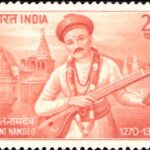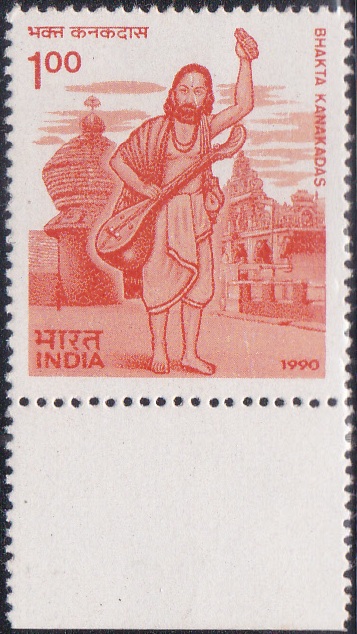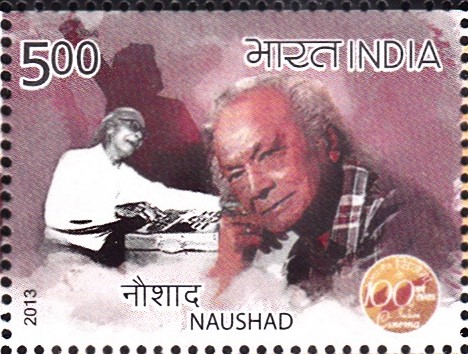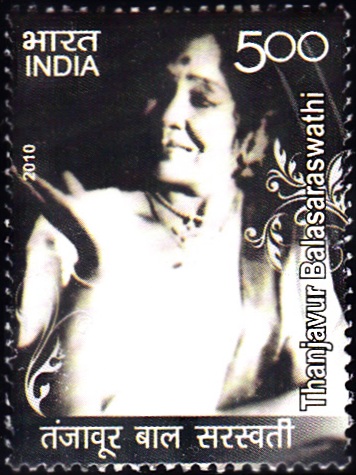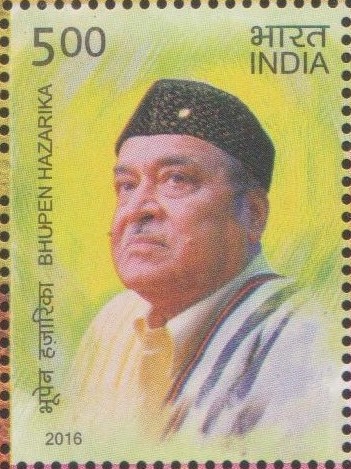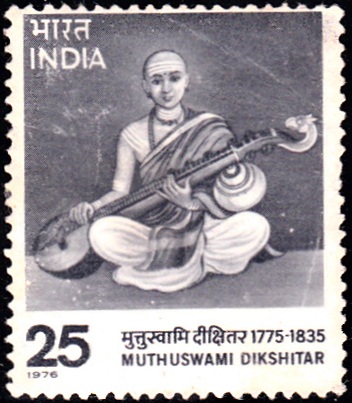
Muthuswami Dikshitar
A commemorative postage stamp on the Birth Bicentenary of Guruguha Muthuswami Dixitar, an Indian poet, singer, composer and Veena player, considered as one among the musical trinity of Carnatic music :
Issued on Mar 18, 1976
Issued for : The P & T Department is privileged to bring out a stamp in honour of this great musician and versatile genius.
Type : Stamp, Postal Used
Colour : Blue grey
Denomination : 25 Paise
Overall size : 3.34 X 2.88 cms.
Printing size : 2.987 X 2.524 cms.
Perforation : 13½ x 14
Watermark : Printed on Unwatermarked adhesive stamp paper
Number printed : 30,00,000
Number per issue sheet : 42
Printing process : Photogravure
Designed and printed at : India Security Press
Name : Muthuswami Dikshitar
Born on Mar 24, 1775 at Thiruvarur, Tamil Nadu, India
Died on Oct 21, 1835 at Ettayapuram, Thoothukudi, Tamil Nadu, India
About :
- Muthuswami Dikshitar, one of the greatest composers of Karnatic music, was born at Tiruvarur in Thanjavur district in 1775. His father, Ramaswami Dikshitar, was a leading, versatile and masterly composer of Karnatic music. Muthuswami Dikshitar studied Sanskrit and allied subjects in his teens and acquired sufficient proficiency in Telugu to serve the needs of music which became his chief passion in life. When he was about fifteen, Muthuswami accompanied a saint called Chidambaranatha to Varanasi where he spent five years. This was an event of far-reaching importance in his life. It gave him an opportunity to listen to Hindustani music which broadened his background and deepened his knowledge. The impact of Hindustani ragas could be seen in his compositions.
- On his return to the South, Dikshitar proceeded to Tiruttani and worshipped at the famous shrine dedicated to Lord Subramanya. Tradition has it that when Dikshitar was in meditation in this shrine, an elderly person appeared before him, put sugar candy into his mouth and vanished into the sanctum sanctorum. Inspired by the vision, Dikshitar burst forth into song and commenced his long career as composer by singing his first kriti ‘Srinathadi Guroguho‘.
- A study of Dikshitar‘s compositions shows that he had an insatiable thirst for visiting temples and singing the praise of deities enshrined there. There is hardly any song which does not describe a temple, the deity worshipped there and the traditions and customs prevalent locally. From Tiruttani, Dikshitar proceeded to Kanchipuram where he spent four years studying philosophy at the feet of Saint Upanishad Brahmendra. He also set to music the ‘Ramashtapadi‘ composed by the latter.
- The most fruitful years of Dikshitar‘s life were spent at Tiruvarur, his birth place. He set up a gurukula and taught music to eminent disciples including his two younger brothers who were highly accomplished musicians. His stay at Tiruvarur was also marked by his prolific output of musical compositions. The single largest group among the songs of Dikshitar is on God Tyagaraja, Goddess Kamalamba and other deities of temples in and around Tiruvarur. Among the most notable of his Tiruvarur kritis are the series of eight songs in eight vibhaktis on Tyagaraja and a group of eleven kritis called ‘Karnalamba Navavarana‘.
- After the death of his father in 1817 Dikshitar moved to Thanjavur to impart musical instruction to his disciples there. Later, he moved to Ettayapuram where the Raja received him with full honours. He spent the last years of his life in Ettayapuram and died there in 1835.
- Dikshitar has left a rich legacy to Karnatic music comprising a few hundred kritis in the Raganga Ragas of Venkatamakhi and other ragas existent in his time, a few group kritis on particular deities, raga malikas (kritis in which several ragas figure), multi-lingual kritis, dance compositions and light tunes based on airs played on the brass band. No other composer of his time has tried his hand at so many varieties of compositions and with such signal success.
- The outstanding feature of Dikshitar‘s compositions is that they present a vivid, accurate and full picture of the raga employed and not merely some of its facets. To him, a raga was not a mere scale or assembly of swaras but a divine form, beautiful and adorable. He was a master of the alap tradition as described in texts and fitted in the classical alap method into his kritis. His vision of the ragas is, therefore, clear and comprehensive and his portrayal of them precise and rich. His songs are in slow measure (vilambit) with a few passages in the madhyama kala (drut) towards the end. His kritis bear the imprint of arduous veena practice and are noted for the graces and glides which are possible only on the veena.



